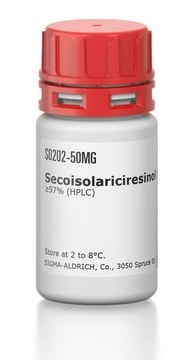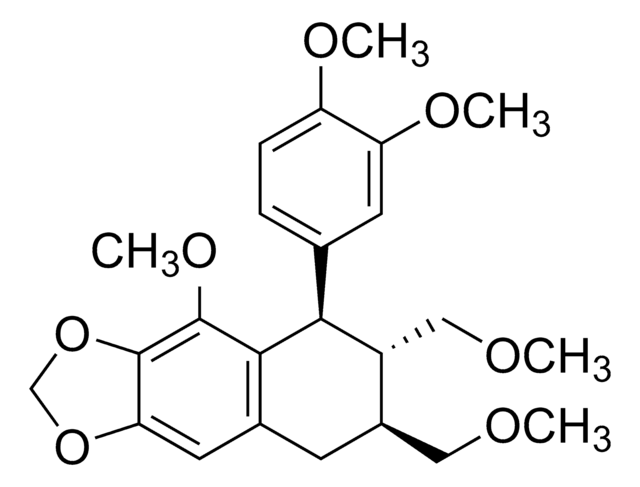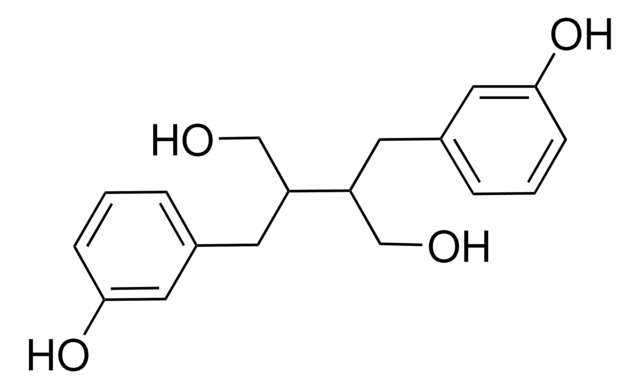SMB01014
Clemastanin B
≥90% (LC/MS-ELSD)
Synonym(s):
LAriciresinol 4,4′-bis-O-|A-D-glucopyranoside
Sign Into View Organizational & Contract Pricing
All Photos(1)
About This Item
Empirical Formula (Hill Notation):
C32H44O16
CAS Number:
Molecular Weight:
684.68
MDL number:
UNSPSC Code:
12352205
NACRES:
NA.25
Recommended Products
biological source
plant
Assay
≥90% (LC/MS-ELSD)
form
solid
mol wt
684.68
solubility
water: slightly soluble
application(s)
metabolomics
vitamins, nutraceuticals, and natural products
storage temp.
−20°C
Related Categories
General description
Clemastanin B, a furanoid lignan, is commonly produced by Clematis stans, Radix Isatidis, Plocama calabrica, Sedum sarmentosum, and Brassica rapa plants. Existing research indicates that this secondary metabolite, derived from plant source, exhibits various biological properties, including antiviral, antiinflammatory, and antioxidant activities.
Application
It is a natural product derived from plant source that finds application in compound screening libraries, metabolomics, phytochemical, and pharmaceutical research.
Biochem/physiol Actions
Clemastanin B has antioxidant and anti-inflammatory activities, it exerts its anti-influenza activity by inhibiting the virus multiplication, prophylaxsis and blocking the virus attachment.
Features and Benefits
- High quality compound suitable for multiple research applications
- Compatible with HPLC and mass spectrometry techniques
Other Notes
For additional information on our range of Biochemicals, please complete this form.
Storage Class Code
11 - Combustible Solids
WGK
WGK 3
Flash Point(F)
Not applicable
Flash Point(C)
Not applicable
Certificates of Analysis (COA)
Search for Certificates of Analysis (COA) by entering the products Lot/Batch Number. Lot and Batch Numbers can be found on a product’s label following the words ‘Lot’ or ‘Batch’.
Already Own This Product?
Find documentation for the products that you have recently purchased in the Document Library.
Ping Xiao et al.
Journal of traditional Chinese medicine = Chung i tsa chih ying wen pan, 36(3), 369-376 (2016-07-30)
To study the antiviral activities of clemastanin B (CB), epigoitrin, phenylpropanoids portion (PEP) and the mixture of phenylpropanoids, alkaloids and organic acid fractions (PEP+ALK+OA) from Banlangen (Radix Isatidis). The experiment consisted of four parts: therapeutic action, prophylaxsis action, inhibition of
Our team of scientists has experience in all areas of research including Life Science, Material Science, Chemical Synthesis, Chromatography, Analytical and many others.
Contact Technical Service







